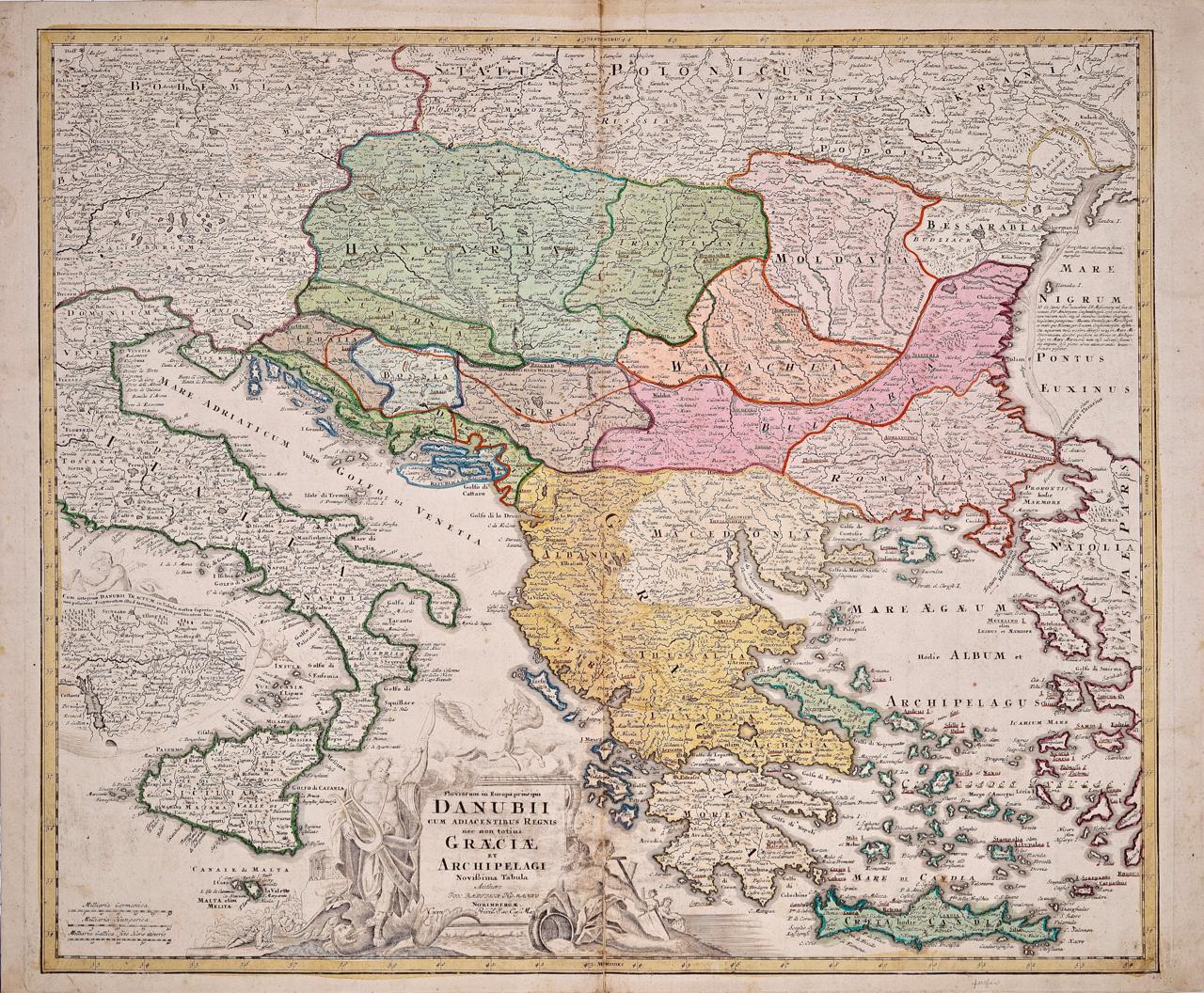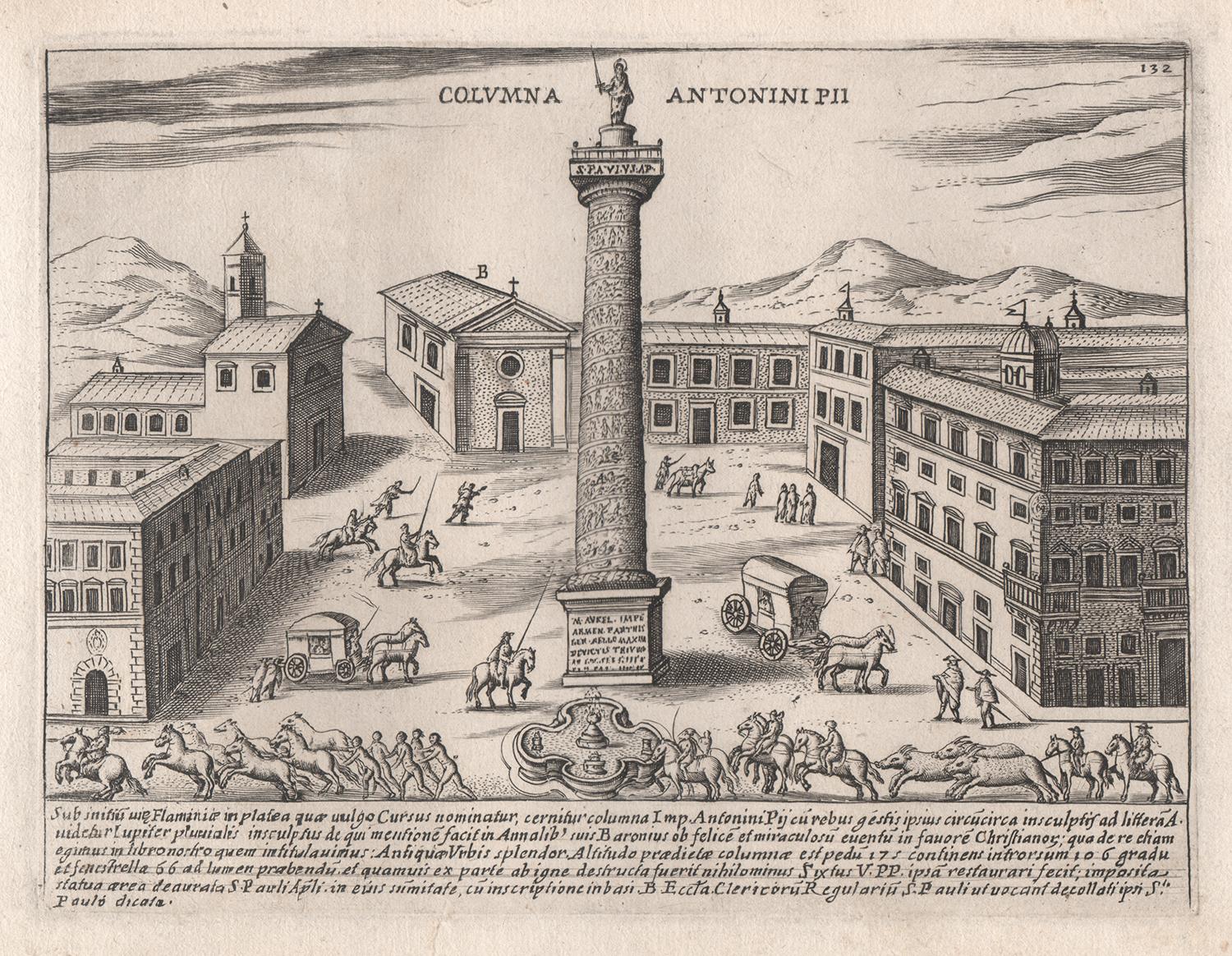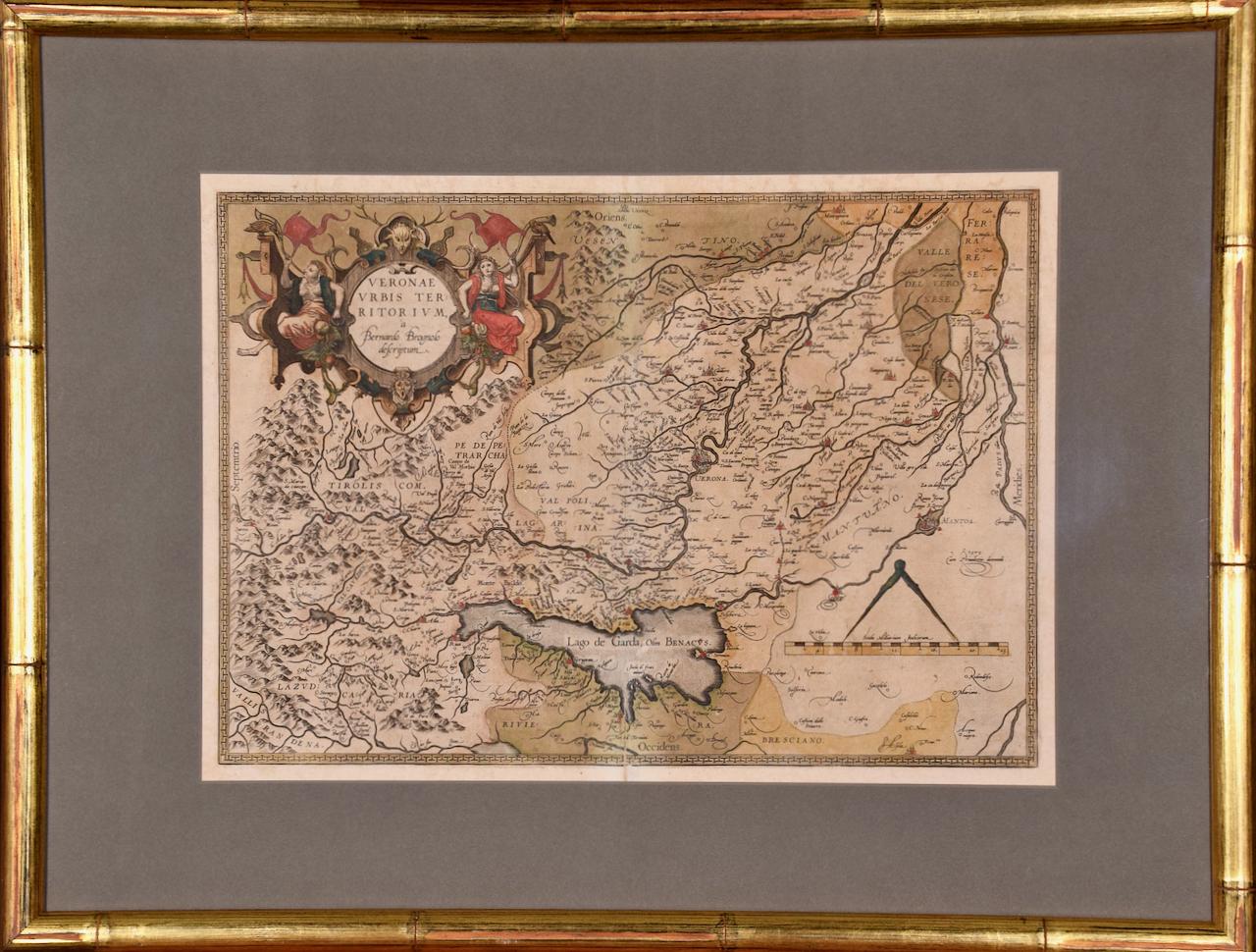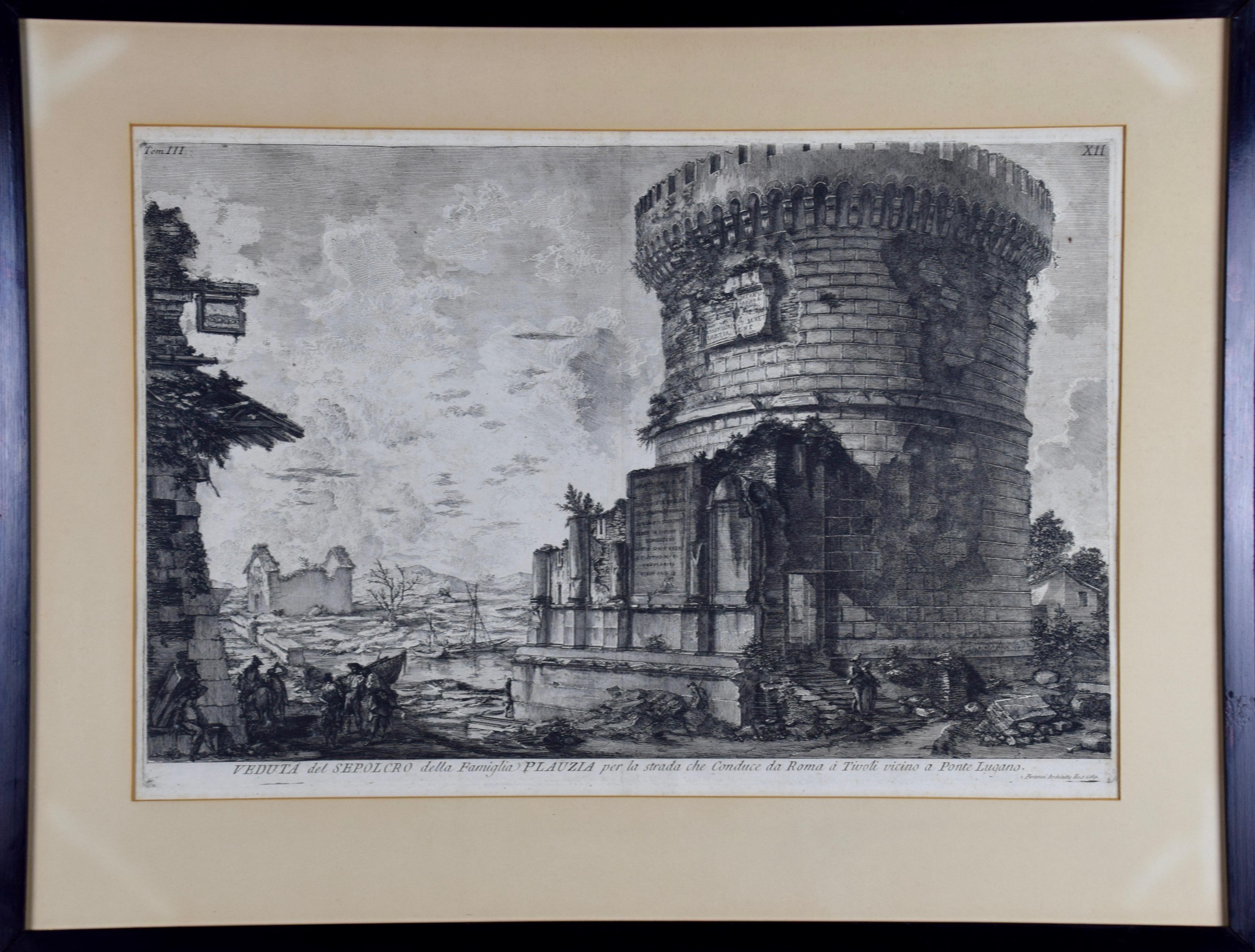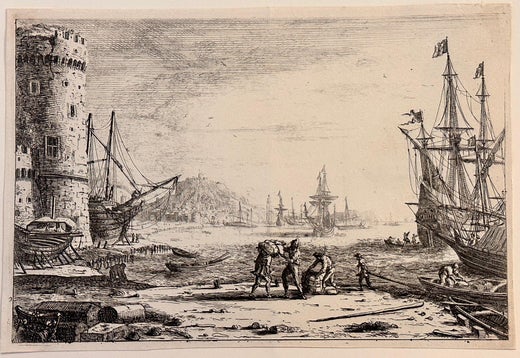Claude Lorrain17th century etching black and white landscape harbor ruins figures scene1668
1668
About the Item
- Creator:Claude Lorrain (1604 - 1682, French)
- Creation Year:1668
- Dimensions:Height: 18.125 in (46.04 cm)Width: 20.25 in (51.44 cm)
- Medium:
- Movement & Style:
- Period:Mid-17th Century
- Condition:
- Gallery Location:Milwaukee, WI
- Reference Number:
Claude Lorrain
Claude Lorrain, born Claude Gellée, was a French painter, draughtsman and engraver of the Baroque era. He spent most of his life in Italy and is admired for his achievements in landscape painting. He painted a pastoral world of fields and valleys not distant from castles and towns that entered into these quiet scenes. Landscape as a subject was distinctly nontraditional and secular during this time of religious and mythical iconography, and Gellée was certainly breaking with tradition. John Constable described the artist as the most perfect landscape painter the world ever saw and declared that in Claude’s landscape, “all is lovely, all amiable, all is amenity and repose; the calm sunshine of the heart." He passed away on November 23, 1682.
- ShippingRetrieving quote...Ships From: Milwaukee, WI
- Return PolicyA return for this item may be initiated within 14 days of delivery.
- 17th century engraving black and white landscape ancient building sceneBy Israel SilvestreLocated in Milwaukee, WI"Tempio Della Pace" is an original engraving by Israel Silvestre. The title is printed below the miniature image. It shows a frontal view of the remains of the Temple of Peace in Rom...Category
1650s Old Masters Landscape Prints
MaterialsPaper, Ink, Engraving
- "Conversation Outside Castle, " an Etching by Jan Frans van BloemenBy Jan Frans van Bloemen (Orizzonte)Located in Milwaukee, WI"Conversation Outside Castle" is an original etching by Jan Frans van Bloemen. It depicts a number of figures just outside the majestic walls of a castle. These groups of figures are engaged in their own conversations. 9" x 6 3/4" art 21 5/8" x 19 3/8" frame Jan Frans van Bloemen (baptized 12 May 1662 - buried 13 June 1749) was a Flemish landscape painter mainly active in Rome. Here he was able to establish himself as the leading painter of views (vedute) of the Roman countryside depicted in the aesthetic of the classical landscape tradition. Van Bloemen predominantly painted classical landscapes, taking his inspiration from the Roman Campagna. His landscapes, with their recession through a series of planes, soft, warm lightning and classical and religious subject matter, drew on the examples of artists such as Claude Lorrain and Gaspard Dughet. His paintings are exquisitely imbued with that "difficult-to-define pastoral ambience" which helped to make him such a great painter in the eyes of his contemporaries. The technique and subjects of the work of Jan Frans van Bloemen are also related to painters such as Jan Asselijn...Category
18th Century Old Masters Landscape Prints
MaterialsEtching
- "Mother & Child Near Statues, " Etching by Jan Frans van Bloemen (Orizzonte)By Jan Frans van Bloemen (Orizzonte)Located in Milwaukee, WI"Mother & Child Near Statues" is an original etching by Jan Frans van Bloemen. It depicts two figures, a mother and child pair, next two two classical statues. There are other figures in this park-like environment. 9 1/4" x 6 3/4" art 21 5/8" x 19 3/8" frame Jan Frans van Bloemen (baptized 12 May 1662 - buried 13 June 1749) was a Flemish landscape painter mainly active in Rome. Here he was able to establish himself as the leading painter of views (vedute) of the Roman countryside depicted in the aesthetic of the classical landscape tradition. Van Bloemen predominantly painted classical landscapes, taking his inspiration from the Roman Campagna. His landscapes, with their recession through a series of planes, soft, warm lightning and classical and religious subject matter, drew on the examples of artists such as Claude Lorrain and Gaspard Dughet. His paintings are exquisitely imbued with that "difficult-to-define pastoral ambience" which helped to make him such a great painter in the eyes of his contemporaries. The technique and subjects of the work of Jan Frans van Bloemen are also related to painters such as Jan Asselijn...Category
18th Century Old Masters Landscape Prints
MaterialsEtching
- "Figures Outside the Monastery, " Original Etching by Jan Frans van BloemenBy Jan Frans van Bloemen (Orizzonte)Located in Milwaukee, WI"Figures Outside the Monastery" is an original etching by Jan Frans van Bloemen. It depicts people on the path to a church. 7" x 10 1/4" art 19 1/4" x 22 5/8" frame Jan Frans van Bloemen (baptized 12 May 1662 - buried 13 June 1749) was a Flemish landscape painter mainly active in Rome. Here he was able to establish himself as the leading painter of views (vedute) of the Roman countryside depicted in the aesthetic of the classical landscape tradition. Van Bloemen predominantly painted classical landscapes, taking his inspiration from the Roman Campagna. His landscapes, with their recession through a series of planes, soft, warm lightning and classical and religious subject matter, drew on the examples of artists such as Claude Lorrain and Gaspard Dughet. His paintings are exquisitely imbued with that "difficult-to-define pastoral ambience" which helped to make him such a great painter in the eyes of his contemporaries. The technique and subjects of the work of Jan Frans van Bloemen are also related to painters such as Jan Asselijn, Thomas Wyck...Category
18th Century Old Masters Landscape Prints
MaterialsEtching
- "Figures at the Obelisk, " Original Etching Landscape by Jan Frans van BloemenBy Jan Frans van Bloemen (Orizzonte)Located in Milwaukee, WI"Figures at the Obelisk" is an original etching by Jan Frans van Bloemen. It depicts two people conversing in front of a monument. Behind them, an expansive landscape sprawls. 9 1/4" x 6 3/4" art 21 3/4" x 19 3/8" frame Jan Frans van Bloemen (baptized 12 May 1662 - buried 13 June 1749) was a Flemish landscape painter mainly active in Rome. Here he was able to establish himself as the leading painter of views (vedute) of the Roman countryside depicted in the aesthetic of the classical landscape tradition. Van Bloemen predominantly painted classical landscapes, taking his inspiration from the Roman Campagna. His landscapes, with their recession through a series of planes, soft, warm lightning and classical and religious subject matter, drew on the examples of artists such as Claude Lorrain and Gaspard Dughet. His paintings are exquisitely imbued with that "difficult-to-define pastoral ambience" which helped to make him such a great painter in the eyes of his contemporaries. The technique and subjects of the work of Jan Frans van Bloemen are also related to painters such as Jan Asselijn, Thomas Wyck...Category
18th Century Old Masters Landscape Prints
MaterialsEtching
- "Near Tottenham Midd., " Original English Landscape Etching by John Thomas SmithBy John Thomas SmithLocated in Milwaukee, WI"Near Tottenham Midd." is an original etching by John Thomas Smith at the top right of the image, reading "Drawn & Etch'd by J. T. Smith, Engraver of the Antiquities of London & Envi...Category
1790s Old Masters Landscape Prints
MaterialsPaper, Etching, Ink
- Landscape - Engraving after Rembrandt - 19th CenturyBy Charles Amand DurandLocated in Roma, ITLandscape is an engraving on ivory-colored paper realized by Charles Amand Durand (1831-1905) after an etching by Rembrandt. This wonderful piece of art belongs to a late edition of ...Category
19th Century Old Masters Figurative Prints
MaterialsEngraving
- Danube River, Italy, Greece and Croatia: A Hand-colored 18th C. Homann MapBy Johann Baptist HomannLocated in Alamo, CA"Fluviorum in Europa principis Danubii" is a hand-colored map of the region about the Danube river created by Johann Baptist Homann (1663-1724) in his 'Atlas Novus Terrarum', publish...Category
Early 18th Century Old Masters Landscape Prints
MaterialsEngraving
- Column of Antoninus Pius, Rome Italy. Jacobs Lauro 17th century engravingLocated in Melbourne, VictoriaLauro produced a series of engravings of the ancient monuments of Classical Rome with detailed descriptions in Latin below. 180mm by 240mm (plate mark)...Category
Early 17th Century Old Masters Landscape Prints
MaterialsEtching, Engraving
- Hand Colored 18th Century Homann Map of Austria Including Vienna & the DanubeBy Johann Baptist HomannLocated in Alamo, CA"Archiducatus Austriae inferioris" is a hand colored map of Austria created by Johann Baptist Homann (1663-1724) and published in Nuremberg, Germany in 1728 shortly after his death. ...Category
Early 18th Century Old Masters Landscape Prints
MaterialsEngraving
- Northern Italy: A 16th Century Hand-colored Map by Abraham OrteliusBy Abraham OrteliusLocated in Alamo, CAThis is a framed 16th century hand-colored copperplate map of northern Italy entitled "Veronae Urbis Territorium a Bernardo Bragnolo Descriptium" by Abraham Ortelius from his atlas "Theatrum Orbis Terrarum", which was the first modern atlas of the world, with the first volume published in 1570. This map was part of a subsequent volume, published in Antwerp in 1584. It was based on an earlier map by Bernardo Brognoli. This beautiful map of northern Italy is focussed on Verona and its environs, including Mantua. Lake Garda and the South Tyrol mountains are prominently depicted. There is a very large striking cartouche in the upper left and a decorative distance scale in the lower right. This striking hand-colored map of northern Italy is presented in a gold-colored wood frame and an olive green-colored mat. It is glazed with UV conservation glass. All mounting materials used are archival. The frame measures 21.5" high by 28" wide by 0.75" deep. There is a central vertical fold, as issued, with slight separation of the lower portion of the fold. There are faint spots in the upper and right margins, but the map is otherwise in very good condition. Abraham Ortelius (also known as Ortels, Orthellius, and Wortels) (1527-1598) was a Dutch cartographer, geographer, and cosmographer. He began his career as a map colorist. In 1547 he entered the Antwerp guild of St Luke as an "illuminator of maps". He had an affinity for business from an early age and most of his journeys before 1560, were for business. He was a dealer in antiques, coins, maps, and books. His business income allowed him to acquire an extensive collection of medals, coins, and antiques, as well as a large library of books...Category
16th Century Old Masters Landscape Prints
MaterialsEngraving
- Giovanni Piranesi Etching of Ancient Roman Architecture, 18th CenturyBy Giovanni Battista PiranesiLocated in Alamo, CA"Veduta del Sepolcro della Famiglia Plauzia per la Strada Che Conduce da Roma a Tivoli vicino a Ponte Lugano" from "Le Antichità Romane" (Roman Antiquities), one of the most famous works by Piranesi. "Antichita" illustrates the tombs along the Appian Way...Category
Early 18th Century Old Masters Figurative Prints
MaterialsDrypoint, Engraving, Etching

